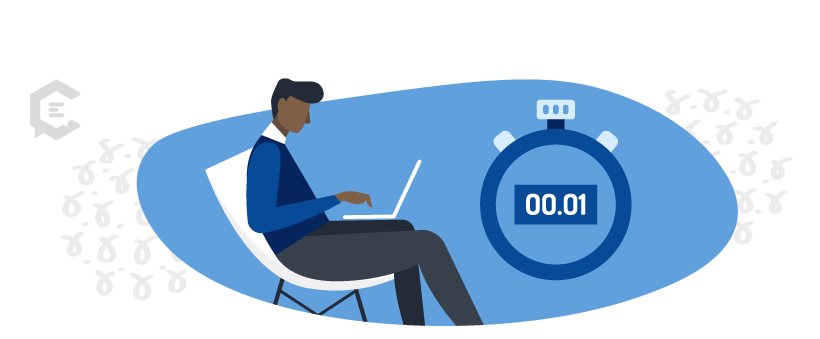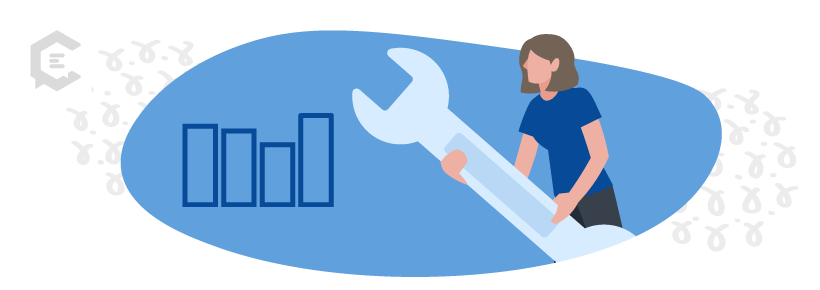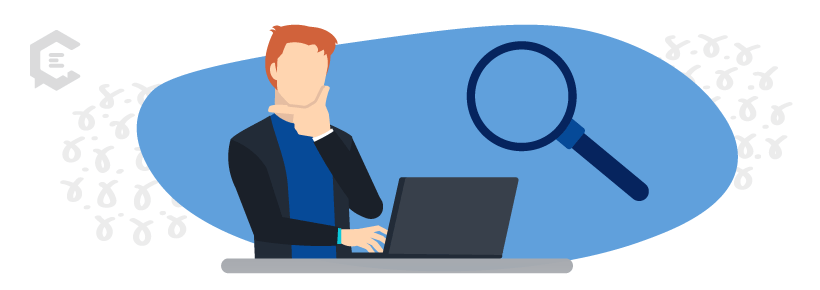Have you ever looked at your bounce rate in Google Analytics and felt distressed that it doesn’t look great?
It’s pretty easy to do. You want your website to be an awesome conversion machine, not a quick one-and-done visit driver, right? So, naturally, bounce rates that appear high are a source of anxiety.
So here you are, Googling “what’s a good bounce rate?” and hoping you’re not too far away from the industry benchmarks.
But what if we told you industry benchmarks don’t really mean much? Sure, they’re fine to look at because they give you at least a small idea of something to hope for, but bounce rates are dependent on so many things that you should take industry benchmarks with a grain of salt. Below, we cover bounce rate myths that all content creators and marketers should know.
6 bounce rate myths and facts you need to know
Bounce rate, along with any other term under the SEO umbrella, comes with myths. Here are the top six bounce rate myths debunked.
Myth: A visitor who bounced only spent a second on your page.
Fact: A visitor could spend a bunch of time on your site and still be considered a bounce.
Bounce rate has nothing to do with the amount of time a visitor spends on your site, only the fact that they left after only visiting one page.
According to Google, “Bounce rate is single-page sessions divided by all sessions or the percentage of all sessions on your site in which users viewed only a single page and triggered only a single request to the Analytics server.”
So, if you had a page that had 100 sessions and 50 of them went on to view another page, your bounce rate would be 50%.
Since the visitor isn’t hitting a second page, Google Analytics doesn’t know how long they spent on your page. It could have been 5 seconds, or it could have been 5 minutes. Since they didn’t click anything else to create a second timestamp (request), there’s no way for Google Analytics to know how much time they spent on your page.
Google Analytics only knows how long a user spent on your page if they visit a second page. Time on page is calculated by subtracting the time the user first visited your page from the time they click to another page on your site. If the user leaves, there’s no second-time stamp to use to determine the time spent on-page.
Myth: A high bounce rate is an indication of bad content.
Fact: A high bounce rate can occur whether your content is “good” or “bad.”
Since bounce rate is calculated by whether a visitor clicked on another page or otherwise interacted with your site, they could still be counted as a bounce, even if they:
- Bookmark your page to revisit later
- Share your page on social media (unless you had tracking code on your social sharing buttons — more on this later)
- Read the whole thing and found it incredibly useful
- Email it to a colleague
- Comment (depending on how your comment system is set up)
You can see how a high bounce rate can be misconstrued as visitors not reading your page. Of course, content that doesn’t live up to expectations or is otherwise “bad” can also cause a high bounce rate.
Myth: The only way to improve your bounce rate is to fix your content and/or website.
Fact: You can manipulate your bounce rate by changing or adding goals and events to Google Analytics.
Remember Google’s quote saying, “bounce rate is all sessions divided by single-page sessions or the percentage of sessions where users visited only one page or triggered only a single request to the Analytics server?” That second bit in italics is the important bit here you can manipulate.
You see, a goal or event you have set up will count as another request to the Analytics server, turning your bounced visitor into a non-bounced visitor. All you have to do is decide what you want to count as a goal or event.
For instance, let’s say that a person clicked on your content and used a sharing icon to share your article on Facebook. Clicking your social share icons doesn’t result in a visitor hitting another URL on your site, so Google Analytics is not seeing it and not counting it.
You, however, would like for the social media share to count as a conversion. If you put a little snippet of code onto that Facebook share button, Google Analytics can see the share and, hence, see it as another request to the Analytics server. The visitor who shares the content but did not visit other pages will trigger a goal or event and will not be counted as a bounce.
Here are more examples of goals and events you can set up with Google Analytics and/or Google Tag Manager to create those “request[s] to the Analytics server:”
- Scrolling to a certain spot on the page
- Clicking a share button
- Leaving a comment
- Signing up for your email newsletter
- Playing a video
- Downloading a file
Myth: Your bounce rate should be aligned with industry benchmarks to be considered “good.”
Fact: Bounce rate varies widely by website, and should be benchmarked against your own numbers.
As you’ve seen already, there are a lot of ways a bounce rate can differ by website, depending on the specific goals you’ve set, events you’ve tagged, and overall website functionality.
Therefore, bounce rates vary by both industry and website. You’re welcome to look up industry benchmarks, but don’t pin your website’s well-being on them.
Instead, use your own website as a benchmark. How can you improve your bounce rate? Even more specifically, how can you keep visitors interacting with your content and triggering goals and events?
While It might feel like cheating, it’s okay to add bounce rate-reducing measures like goals and events. In fact, it will provide you with more data and insights about how your visitors use your website, giving you a lot more opportunities for improvement and increased leads or sales.
Myth: Visitors who bounce away aren’t finding what they’re looking for.
Fact: While this could be true, it’s also possible they’re finding the information they need right away, then leaving.
You create awesome content that answers questions, right? So, if a website visitor finds you via search, clicks on your result, and reads the bit of content they were looking for, it makes sense that they leave after finding their answer.
Of course, the opposite could also be true. A user could be quickly scrolling the page, not finding what they’re looking for, and leaving. It’s really important to create enticing links that lead users further into your site, set up more goals and events, and create a lot of opportunities to interact.
Myth: Google uses bounce rate in its ranking algorithm.
Fact: Bounce rate does not directly affect Google’s ranking algorithm.
Google has said not once, but multiple times, that bounce rate is not factored into their search ranking algorithm. In June of 2020, John Mueller of Google said:
I think there’s a bit of misconception here that we’re looking at things like the analytics bounce rate when it comes to ranking websites, and that’s definitely not the case.
In fact, Search Engine Journal did a deep dive in 2022 into whether or not Google uses bounce rate as a ranking factor and found that they conclusively do not.
While they don’t use this particular metric, they do collect similar user signals to determine which websites provide the best answers to search queries.
Dwell time, for instance, is Google’s way of seeing how long someone spends on a page before returning to the search results. So while bounce rate isn’t used for ranking purposes, you should work to keep users on your website for as long as possible.
Now that you know the most common bounce rate myths, you can work on realistically improving your rate. If you need help keeping web visitors around for longer, we can help. Get better, higher-quality content that engages your target audience by talking to a content specialist at ClearVoice today.






